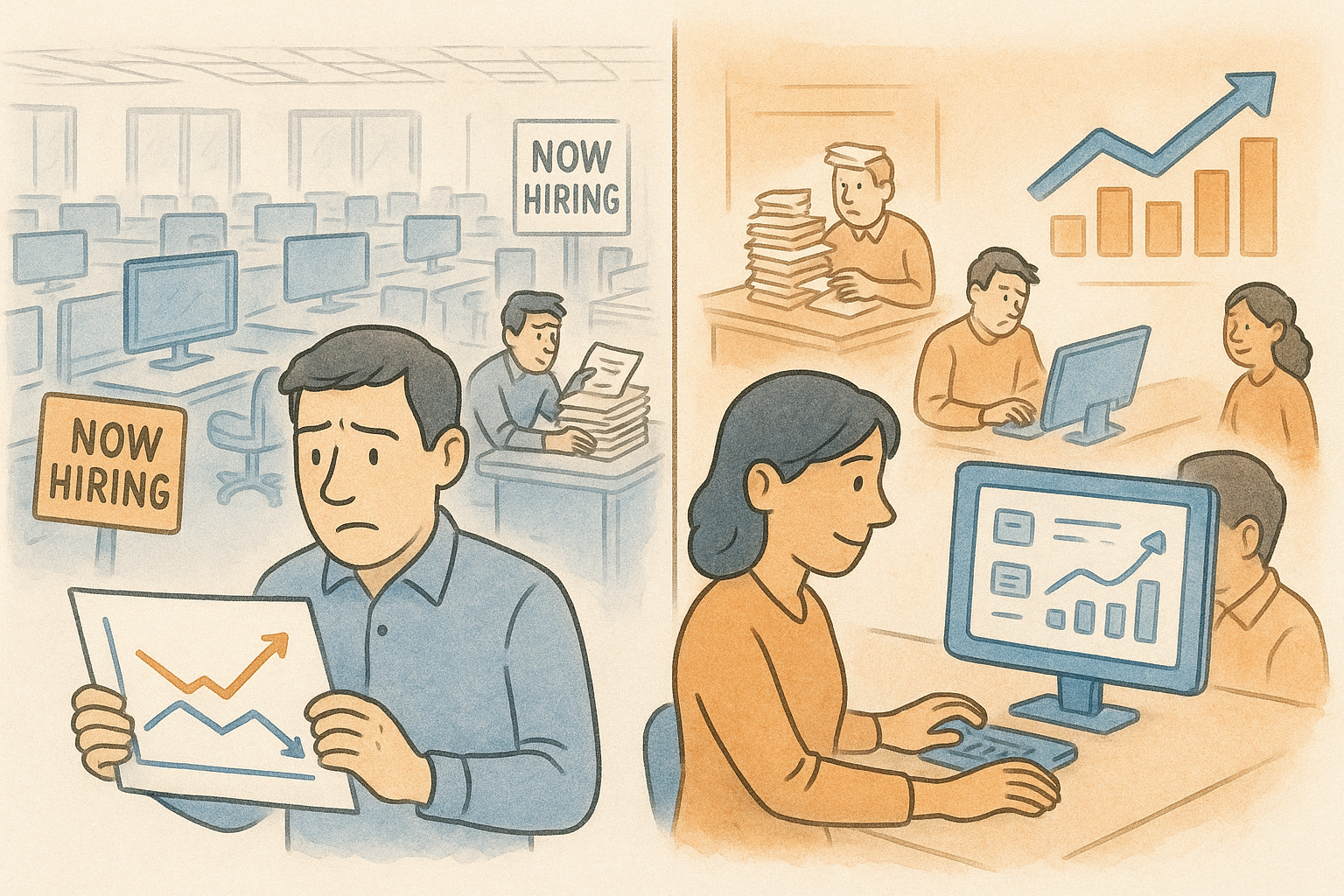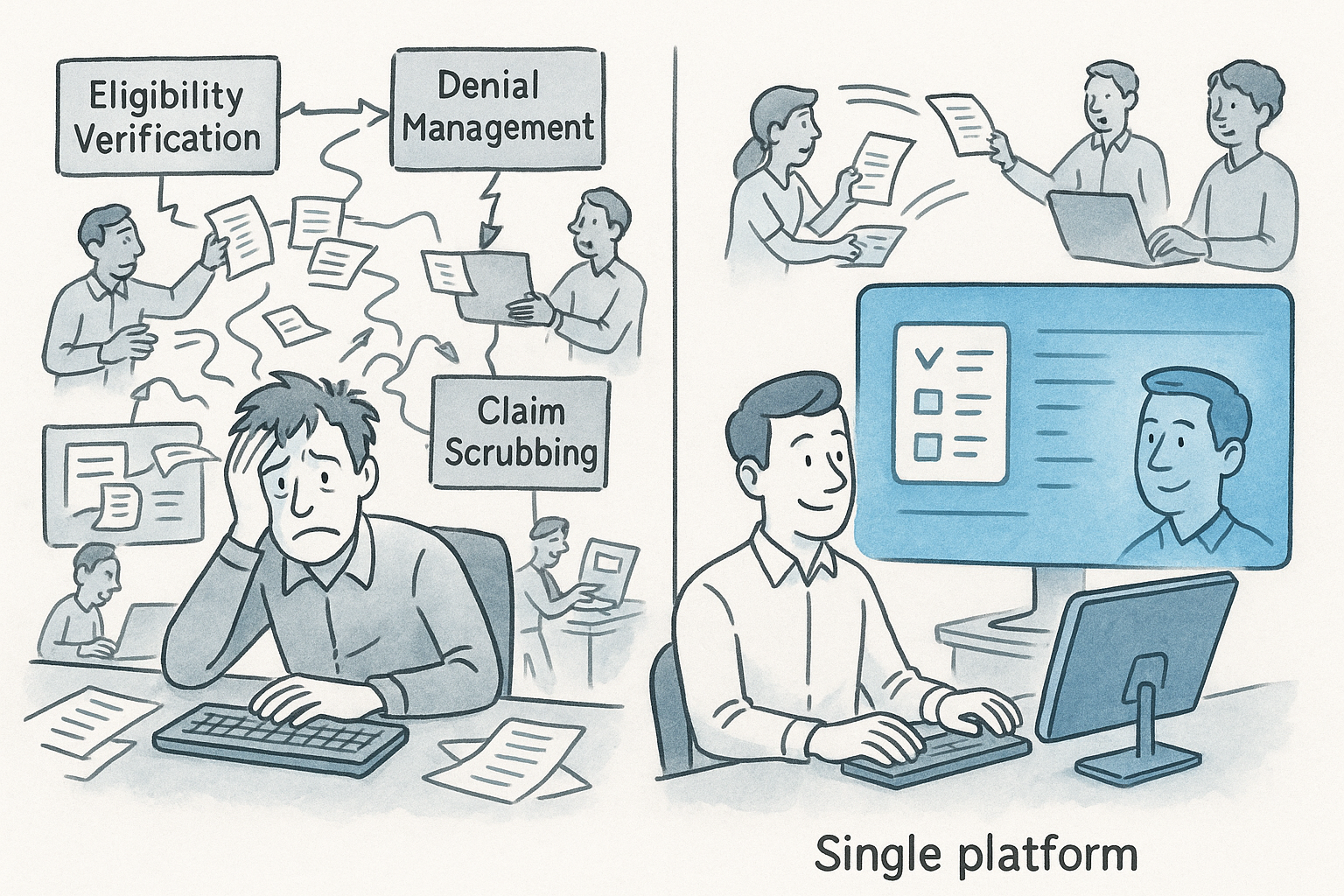
Bridging the Technology Gaps in Healthcare Revenue Cycle Management
In today’s fast-paced healthcare environment, Revenue Cycle Management (RCM) is vital for maintaining financial stability and seamless operations. However, integrating technology into RCM has introduced challenges that can hinder efficiency and profitability. This article explores the relationship between technology and RCM, focusing on the struggles faced and strategies to bridge these gaps effectively.
The Role of Technology in Healthcare RCM
Technology is the backbone of modern RCM processes, handling tasks like patient registration, insurance verification, claims submission, payment processing, and revenue analysis. Tools like Electronic Health Records (EHR), Practice Management Systems (PMS), and RCM software help streamline operations, reduce errors, and optimize revenue capture.
Challenges in Healthcare RCM
Despite the benefits of technological advancements, healthcare organizations face several challenges in effectively using technology for RCM:
- Integration Complexity:
A significant challenge is integrating various technological systems. Healthcare providers often use separate systems for EHR, PMS, and billing, leading to integration issues. These systems may not communicate well, causing data silos, inefficiencies, and revenue leakage. - Compliance and Regulation:
Healthcare is heavily regulated, with strict rules on patient privacy (HIPAA), billing practices (CMS guidelines), and data security (HITECH Act). Navigating these regulations while using technological solutions is challenging. Non-compliance can result in penalties, legal action, and damage to an organization’s reputation. - Staff Training and Adoption:
The success of technology in RCM depends on staff training and adoption. Healthcare professionals must be proficient in using RCM software to maximize efficiency. However, resistance to change, lack of training resources, and staff turnover can hinder adoption, leading to underutilization of technology and decreased productivity. - Data Security Risks in Healthcare RCM:
The digitization of healthcare data introduces security risks like data breaches and cyberattacks. Protecting sensitive patient information is crucial, but many organizations struggle to implement strong cybersecurity measures. A data breach compromises patient confidentiality and exposes the organization to legal and financial risks. - Overcoming Technological Obstacles in Healthcare RCM
Revenue cycle directors often face significant hurdles in optimizing financial operations due to outdated technology and evolving market demands.
- Compromising on Ideal Operations:
Many revenue cycle directors envision seamless workflows where technology efficiently supports every aspect of patient billing and care. However, the reality often involves compromising due to the limitations of current tools, particularly EHR systems. These systems may lack features like accurate auto-posting or reconciliation, forcing directors to seek third-party solutions. - Stitching Together Incompatible Tools:
To address these shortcomings, some healthcare providers integrate third-party vendors that offer missing features. However, this often results in a patchwork of technologies that struggle to communicate effectively. This adds complexity and perpetuates a cycle of adjustments, far from the streamlined processes initially desired. - The Hype and Reality of AI in Healthcare RCM:
The healthcare technology space is filled with promises of AI and other innovations, but skepticism prevails among experienced RCM professionals. Despite the buzz, AI has yet to fundamentally change daily operations in healthcare facilities, and the challenges with foundational software remain.
Conclusion
Integrating technology into Healthcare RCM brings many benefits but also significant challenges. By understanding these challenges and implementing proactive strategies, healthcare providers can bridge the gaps in technology and optimize their RCM processes. This leads to improved efficiency, accuracy, and financial performance in an increasingly complex healthcare landscape.






